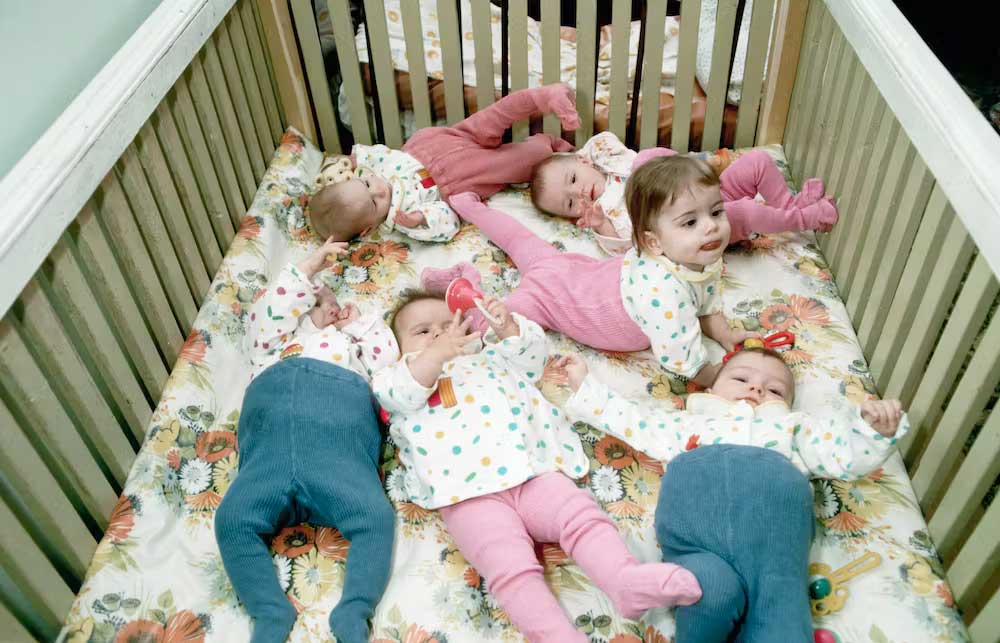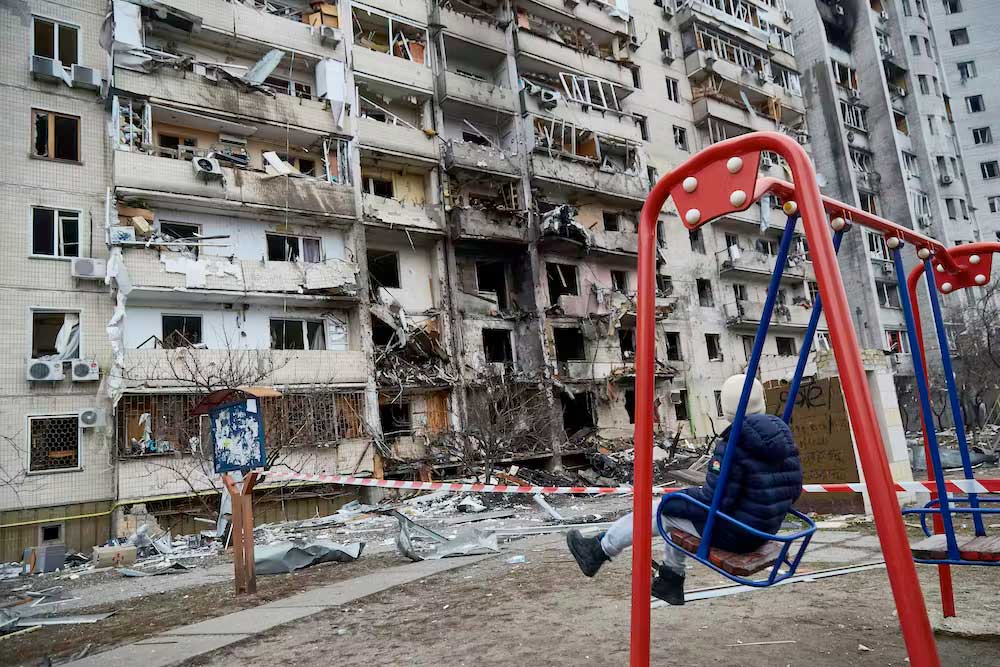Clementine Fujimura, United States Naval Academy
Since Russia launched a full-scale invasion of Ukraine in February 2022, Russian soldiers have forcibly taken an estimated 16,000 Ukrainian children to Russia. Over 300 children have since returned home, but it is not clear what happened to most of the rest.
The mass abductions led prosecutors at the International Criminal Court to issue arrest warrants in March 2023 for Russian President Vladimir Putin and Russia’s children’s rights commissioner, Maria Lvova-Belova. Moscow counters that the children it has brought to Russia—its estimates are as many as 744,000 Ukrainian children—have been evacuated from conflict zones.
I am an anthropologist who studies marginalized communities, including youth subcultures in Russia and other places, including the United States and parts of Europe.
The kidnapping of Ukrainian children offers a reminder of how Putin and other Russian leaders have historically used children as pawns in international politics.
A Soviet Promise to Children
I explore the lives of homeless and abandoned Russian children, including kids in orphanages and other similar institutions in Moscow, in my 2005 co-authored book, “Russia’s Abandoned Children: An Intimate Understanding.”
My research included numerous trips to Russian orphanages between 1990 and 2000, as well as time spent living and volunteering in an orphanage and shelter for babies.
It’s helpful to understand that before the Soviet Union collapsed in 1991, the Soviet government presented a myth that all children—including those in institutions—would receive excellent care. The Soviet government promised these children that their futures were promising and that they would receive an education and have help getting a job.
Other than adults who worked in these Soviet orphanages or psychiatric hospitals, no one was allowed to see what went on inside.
The myth of these orphaned children’s perfect childhood calmed citizens’ potential concerns, my research shows.
However, the public began to realize Russian orphans’ plight once the Soviet Union broke apart. Orphans and otherwise abandoned children in orphanages began to escape the institutions when possible. They formed their own version of kinship groups, gathering on city streets and in underground train stations.
I discovered in my research that many abandoned children preferred being homeless to living in orphanages.
This trend of youth vagrancy became a sore spot for the Russian government, as it tried to grow its economy and rebrand itself in the West.

Soviet orphans play in a crib in 1991, the year the Soviet Union fell. Peter Turnley/Corbis/VCG via Getty Images
Russia’s Struggle to Care for Kids
Russia’s decision to end adoptions to American families in 2012 offers another example of how the Russian government has used children for nefarious purposes in the past few decades.
The Russian government first opened the doors for international adoption in 1991. Citizens from the U.S. and other Western countries eagerly responded, welcoming the new openness of Russia.
This helped boost Russia’s image in the West as a kinder country than it was during the Cold War. At the time, around 371,700 Russian children were growing up in state institutions. Most of these kids had at least one living parent.
In some cases, government deemed some parents unfit for the job and moved the kids to an institution.
U.S. citizens adopted more than 60,000 Russian orphans from the early 1990s until 2013.
During my time spent with teachers, doctors and children in Russian orphanages and shelters, it was clear that Russia struggled to care for abandoned and otherwise institutionalized children, including those taken from parents.
There were also widespread reports of the children being neglected and mistreated.
In the orphanage I studied, children did not eat fresh fruits and vegetables, and the caretakers often lamented the food’s lack of nutritional value. I was asked to bring vitamins, diaper rash cream and other basic necessities.
The fact that the Russian government could not handle its orphans was a source of embarrassment. Putin, who served as president from 2000 through 2008 and again starting in 2012, saw the need to change the narrative of the poor Russian orphan, if only for the sake of the country’s public image.
‘It’s Hard to Believe’
In 2008, a Russian toddler born with the name Dima Yakovlev died of heatstroke while left unattended in his adoptive father’s parked car in the Washington, D.C., area.
This news made international headlines. Some Russian officials pointed out the lack of oversight and abuse that adopted Russian children experienced in the U.S. This narrative helped weaken the U.S. in the eyes of Russian citizens, thereby strengthening the image of the Russian government.
“When we give our children to the West and they die, for some reason the West always tells us it was just an accident,” Russian politician Tatyana Yakovleva reportedly said in 2009. “It’s hard to believe.”
This case and other news stories about a few U.S. adoptive families treating Russian children poorly coincided with another political controversy.
Russian police arrested attorney Sergei Magnitsky on questionable grounds. Magnitsky had uncovered a tax fraud worth US$230 million. Magnitsky died while in custody in 2009, before he could stand trial.
In 2012, the U.S. Congress approved new legislation, called the Magnitsky Act, which identifies and imposes sanctions on Russian officials who are accused of human rights violations.
A Halt to Adoptions
In 2012, Putin signed the law banning international adoptions to the U.S.
Putin’s law, which went into effect in early 2013, halted thousands of adoptions already in progress with American families.
U.S. scholars and journalists have argued that Putin’s adoption ban was a direct retaliation to the Magnitsky Act and was not about Putin’s concern for Russian orphans. Putin promised to improve the Russian child welfare system in 2013. Some outside analysis by groups like the World Bank have documented positive changes at Russian institutions for children, such as more funding. But there remain challenges—including the fact that Russia has a much higher rate of institutionalized children than other middle- to high-income countries.

While some abducted Ukrainian children have come home to their families, most remain unaccounted for. Pierre Crom/Getty Images
A Similar Playbook
In the face of evolving battlefield failures in Ukraine, Putin has pivoted to a familiar playbook of using and abusing children, continuing to call for the “evacuation” of Ukrainian children, both from Ukrainian orphanages and from their families. These children are being moved to Russian orphanages and camps, where they learn how to be Russian.
In order to become citizens of Russia, these children have been forced to abandon their Ukrainian heritage, both physically and mentally, and to get a new education in Russian propaganda and history.
Russian citizens, in turn, are once again presented with the myth that children in Ukraine are being saved from the war and offered a better life.
But for Ukrainian families and orphanage staff involved, these abductions amount to a form of torture, with parents and caretakers clamoring to find their children and bring them home.![]()
Clementine Fujimura, Professor of Anthropology, Area Studies and Russian, United States Naval Academy
This article is republished from The Conversation under a Creative Commons license. Read the original article.

The Conversation
The Conversation is a nonprofit, independent news organization dedicated to unlocking the knowledge of experts for the public good. We publish trustworthy and informative articles written by academic experts for the general public and edited by our team of journalists.
